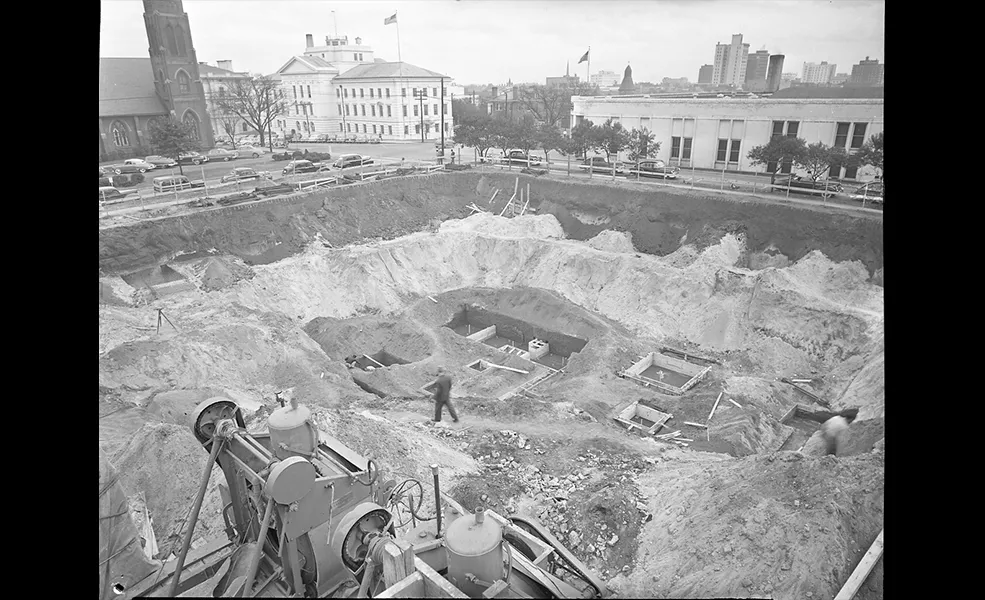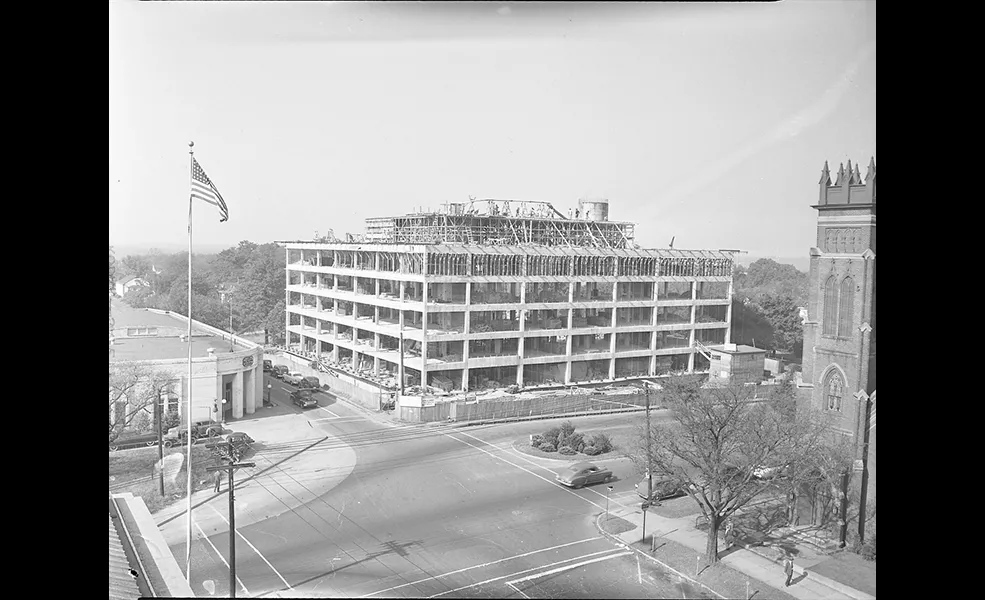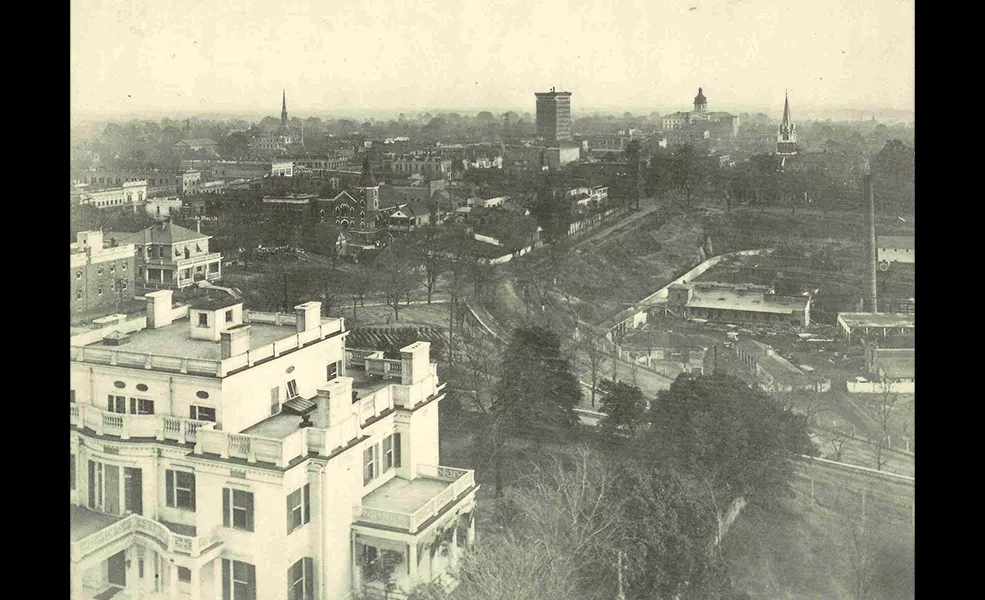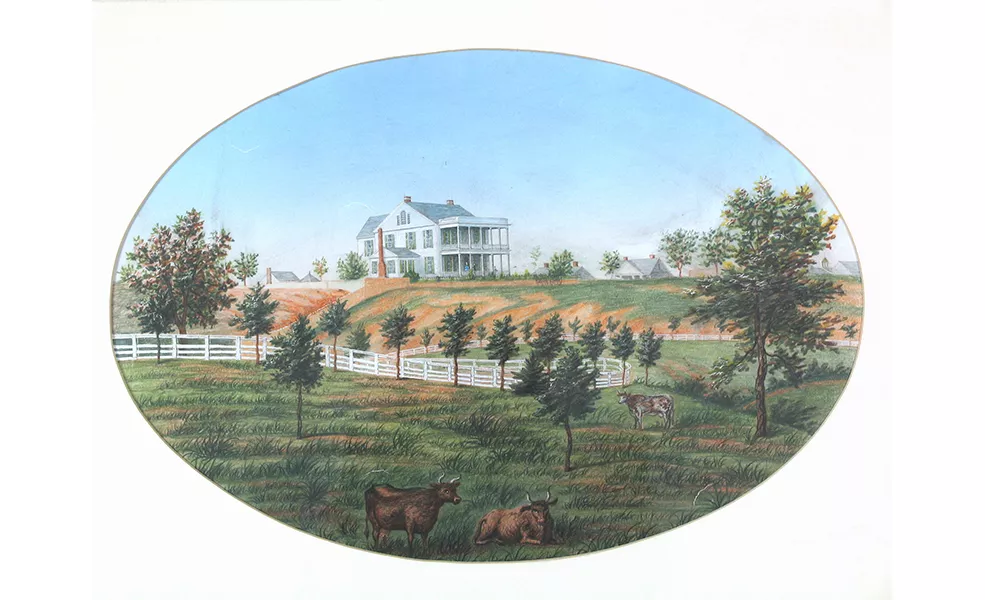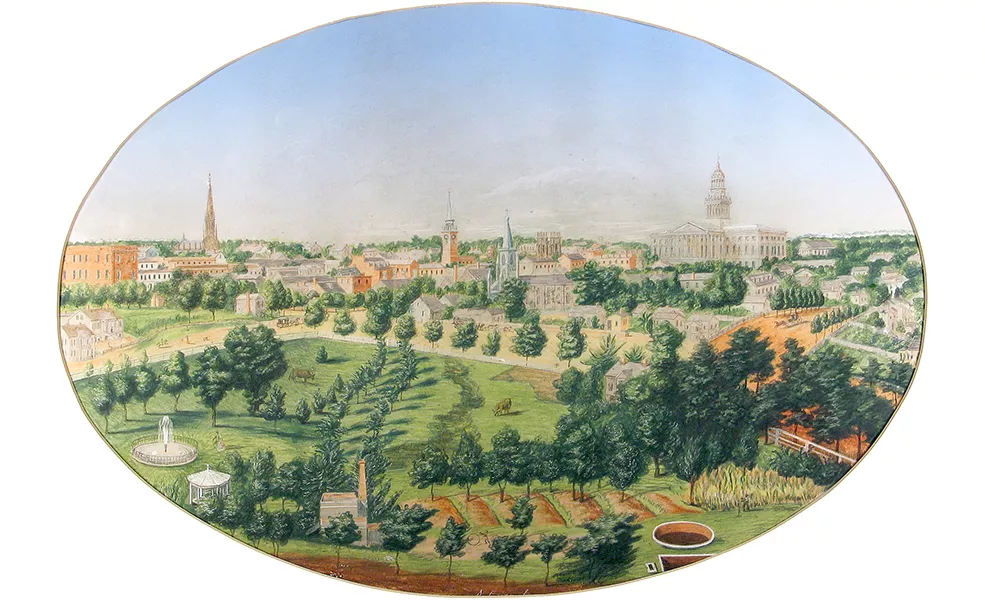1801 Assembly Street
Veterans Administration Building
Built in 1949, this structure replaced the sprawling Beaus-Arts style mansion of businessman Edwin Wales Robertson and later Edwin G. Seibels. An even earlier structure at this site, the circa-1793 home of John Taylor, was a prominent landmark until destroyed by fire in 1893.
Photographer John Hensel tracked the change that the construction of the Veterans Administration building made to the Arsenal Hill neighborhood beginning in the fall of 1949. Following the demolition of the Robertson-Seibels Mansion, the "standpipe," or water tower, that supplied the area with water service, as part of the municipal waterworks became more visible, albeit temporarily, until the full height of the new federal building was achieved.
Site of Edwin Wales Robertson House
Designed by architect James Bright, the home of banker, developer, and industrialist Edwin Wales Robertson, dwarfed other Arsenal Hill properties, residential and otherwise, and was considered by many at the time of its construction in 1903 to be the city's finest house. Before his death in 1928, Robertson would play a major role in the development of Camp Jackson and the suburb of Wales Garden. The massive landmark featured extensive Italian marble detailing, an elevator, a Mosler safe, built-in cabinetry, and rooms of Honduran mahogany. These and other expensive aspects of the home, including furniture, were sold in July 1949 in preparation for the property's demolition later that year.
Site of John Taylor House
Built around 1793 by John Taylor (1770-1832), who served as a member of both houses of Congress and as governor of South Carolina, this structure benefitted from both the breezes and views afforded a hill-top residence. John was the oldest son of Colonel Thomas Taylor (1743-1833), a plantation owner and leader in the Revolutionary War whose land became a large portion of the city of Columbia. Like many homes in Arsenal Hill, this one featured impressive gardens. It was destroyed by fire in 1893.
